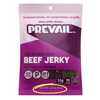What Is Hiking?

What is hiking? This is a question that we're sure many people have, especially those who are new to the activity. To some people, the word hiking means strapping on a pair of boots and hitting a hiking trail or local park for an afternoon out in nature. To others, hiking can be a serious multi-day backpacking trip deep into the wilderness.
At its core, though, hiking simply involves walking and being active outdoors – enjoying the fresh air and getting some exercise while taking in the beauty of the natural environment around you. In this article, we'll explore all aspects of hiking, from its origins and what to take when hiking. So whether you're a beginner or an experienced hiker, read on for everything you need to know about this fun and rewarding activity!
What Is Hiking? And Where Does It Take Place?

A hike is a journey undertaken on foot in which the walker attempts to cover as much distance as possible. It can take place in any number of outdoor locations – such as national parks, hiking trails, or forests. But it can also be done in an urban environment, like a city or town.
Hiking is considered a form of exercise, and it indeed offers many physical health benefits. But it's also a great way to relax and de-stress, and it can be a wonderful way to connect with nature.
Hiking often involves some degree of planning and preparation, especially if you're hiking a long distance. Before hiking, you'll need to choose a route, make sure you have the necessary supplies and equipment, and perhaps even obtain a permit or map in advance.
Origins Of Hiking
Hiking's origins are a bit unclear, but it is thought to have started as a way for people to view beautiful sites such as mountains.
For centuries, mountains were not particularly seen as gorgeous spots to be sought out but rather as terrible places to be avoided and dreaded. During the early 1800s in England, the Romantic movement changed everything, with writers and poets fleeing increasingly industrialized cities to discover stunning scenery like those found in the English Lake District and Scottish Highlands.
The interest in exploring beautiful mountain peaks began to spread throughout Europe as visitors began visiting areas like the Alps for pleasure. The first ascent of Mont Blanc, Western Europe's tallest peak, occurred in 1786, and the following hundred years would see all of the major alpine peaks conquered by daring explorers. This was accompanied by tales of bravery and drawings of breathtaking vistas, which resulted in a significant increase in public interest.
Meanwhile, in the early 1800s, European romanticism's influence reached the United States through the Transcendentalist movement. The goal of preserving and maintaining wilderness areas while yet allowing people to enjoy them resulted in the formation of national parks all over the world.
What Is The Best Time Of The Year To Go Hiking?

There is no definitive answer to this question – it depends on where you live and what type of hiking you want to do. In general, though, spring and fall are generally considered the best times of year for hiking. The weather is usually milder, and the trails are less crowded.
If you live in a place with cold winters, you can still hike – you'll just need to dress appropriately and be prepared for some icy conditions. And if you live in a place with hot summers, hiking in the early morning or evening hours can help you avoid the worst of the heat.
Different Types Of Hiking
There are many different ways to hike, and the type of hike you choose will depend on your fitness level, the amount of time you have, and what you're hoping to get out of the experience.
Day hikes are the most popular type of hike, and they can be done in a variety of locations – from local parks to more remote areas. Day hikes typically last anywhere from a few hours to an entire day, and they usually don't require any special equipment or training.
If you're interested in spending more time outdoors, you might want to try an overnight hike. These hikes can last for one or two nights, and they usually involve camping. Overnight hikes often require more preparation than day hikes, as you'll need to carry all of your supplies with you. But they can be very rewarding, giving you the chance to really immerse yourself in nature.
For a truly challenging experience, you might want to try a multi-day hike. These hikes can last for several days or even weeks, and they often require special equipment and training. Multi-day hikes can be very strenuous, but they're also a great way to see some of the most beautiful parts of the world.
What Equipment Do You Need?

The type of equipment you'll need for hiking will depend on the type of hike you're doing. For day hikes, all you really need is a good pair of walking shoes and some water. But if you're planning an overnight or multi-day hike, you'll need to pack a few more things.
For overnight and multi-day hikes, you'll need the following:
-
A backpack: This will be your main storage container, and it should be big enough to fit all of your supplies.
-
A tent: Unless you're planning to sleep under the stars, you'll need a tent to protect you from the elements.
-
A sleeping bag: You'll need a warm place to sleep at night, so make sure to pack a sleeping bag that's appropriate for the weather conditions.
-
A stove: If you're planning to do any cooking on your hike, you'll need a stove.
-
First-aid kit: It's always a good idea to be prepared for minor injuries, so make sure to pack a first-aid kit.
-
Footwear: You'll need one pair of hiking boots or hiking shoes for the walk and another pair for camp.
-
Clothes: Make sure to pack appropriate clothes for the weather conditions.
-
Hiking poles: These can be helpful for walking uphill or for stability on rough terrain.
-
Map and compass: If your hike is in a remote area, make sure to bring a map and compass so you can find your way back.
-
High protein snacks: It's always important to have some sort of snack while exercising for long periods of time, like a hike. High protein snacks are your best option as they will help keep you full for longer periods of time. Not only will they help keep you full, but when exercising, they'll help your body repair itself and increase fat burning and muscle mass. Make sure when picking the perfect snack to take on a hike, you're choosing a high-quality snack like Prevail Jerky.
When Does A Hike Become A Trek?
The word "trek" is often used interchangeably with "hike." But strictly speaking, a trek is a longer, more difficult hike that might last for several days or weeks. Treks are often done in remote, challenging locations, such as the Himalayas or the Andes. They typically require more planning and preparation than a shorter hike, and they may also require the use of specialized equipment.
Hiking becomes trekking when:
-
It lasts multiple days
-
It is done in a remote location
-
It requires specialized gear
If you're thinking of embarking on a trek, it's essential to make sure you're adequately prepared.
Make sure you have the right gear, choose a route that's within your abilities, and allow plenty of time to complete the journey. With proper planning and preparation, a trek can be a gratifying experience.
When Does Hiking Become Mountaineering?
Mountaineering is a form of hiking that typically involves longer, more difficult routes and often includes elements of rock climbing. It's typically done in mountainous regions, and it often requires the use of specialized equipment.
Hiking becomes mountaineering when:
-
The terrain is more difficult, involving longer and steeper ascents and descents.
-
You'll need specialized equipment, such as ropes, crampons, and an ice ax.
-
The weather conditions are more challenging, and you may encounter snow and ice.
Mountaineering is a more technical and difficult form of hiking that requires specialized training and equipment. It is usually performed by experienced hikers in more challenging conditions.
If you're planning to embark on a mountaineering trip, ensure you're properly trained and equipped.
How To Prepare For A Hike
Before you head out on a hike, it's important to do some preparation. First, you'll need to choose the right hike for your skill level and fitness level. Once you've done that, you can start resting and preparing your body for the hike.
It's also a good idea to familiarize yourself with the area where you'll be hiking. If you're hiking in a remote area, make sure to study the map and familiarize yourself with the terrain. And if you're hiking in an area with wildlife, it's a good idea to learn about the local animals and how to avoid them.
Finally, you can start packing your supplies and getting your gear ready. One of the most important things to pack during a hike is food and snacks! Snacks help you stay energized during a hike, so make sure to pack plenty of them.
Don't Know What Snack To Take While Hiking? Try PREVAIL Jerky!

PREVAIL jerky is the perfect snack for hikers! Our all-natural beef jerky is packed with protein and flavor, making it the perfect choice for an on-the-go snack. Plus, our jerky is shelf-stable, so you can pack it without having to worry about it going bad.
Whether you're planning a day hike or a multi-day expedition, Prevail Jerky is the perfect snack to keep you fueled and satisfied. Order some today and see for yourself!
Final Thoughts
Hiking is a great way to get some exercise and enjoy the outdoors. But it's important to be prepared before you hit the trail.
Make sure you have the right gear and know your abilities. And if you're planning a longer hike, make sure to allow plenty of time to complete the journey. With proper planning and preparation, you can ensure that your hike is safe and enjoyable.











